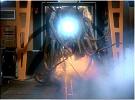ORIGINAL: Nikademus
It just doesn't show up enough for me to accept it's intentional.
I think it’s more common than you think. In my current PBEM game I lost the Yorktown to a range 5 strike by the Japanese, but the Saratoga was in the same hex and its task force was unspotted, or rather any strikes launched at it turned back, as my opponent did see the CV. The fact he hit the Yorktown prevented any complaints about no strike on the Saratoga, but had it been at range 4 and neither of my CV’s were spotted, I’d have gotten to hit him without a return strike.
But once the allied coordination penalties go away, then both sides create CV task forces with more than 10 squadrons in them and from that point forward there is no chance of failed location rolls, as I assume a 10 DL guarantees locating the target. So the only time these can occur in most games is in 1942 with small allied CV task forces, but most players keep those in one hex, so usually at least one CV gets attacked, so complaints don’t crop up then.
The rule makes sense in a way, it’s the lack of reporting on what is occurring that creates a problem. If the combat report text included the rolls of the form up (strike coordination rolls) and location attempts, everything would make perfect sense.
But because the only clue players get is a flash over the map during the turn that says squadron x unable to locate target, we’re left saying WTF? If there was more info provided to the players all this confusion would go away.
Had Speedy’s bombers not landed back on the non-damaged CV’s, we’d have no proof they ever flew. But we do know they flew, so we have to assume it was a failed location roll by the leader squadron that forced the strike to fail to locate the target.
I think they were trying to simulate the lost squadrons at Midway with this rule, but the unintended effect is that it is possible that a very large well coordinated strike can fail to locate a target. I’m not sure that ever occurred in the war, so I think the rule should be changed so that a failed location roll breaks up a strikes coordination and forces each carrier’s squadrons to roll individually as smaller strikes.
So if the leader fails to locate a target, the big strike becomes several smaller CV sized strikes consisting of each CV’s squadrons grouped together, and then those strikes make a roll. If all of those fail, then you’d see an unanswered strike, but I doubt that would happen very often, if ever.
Jim
















